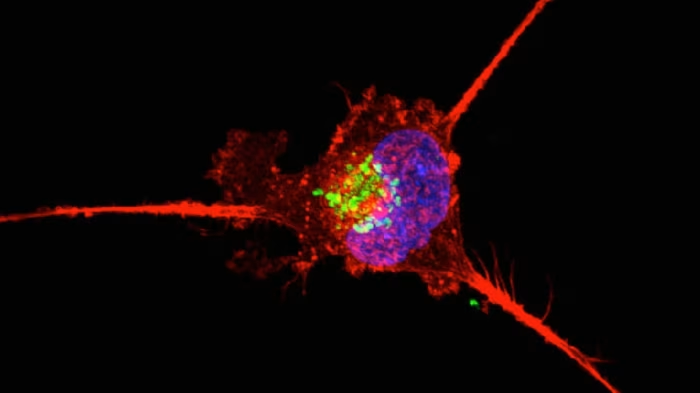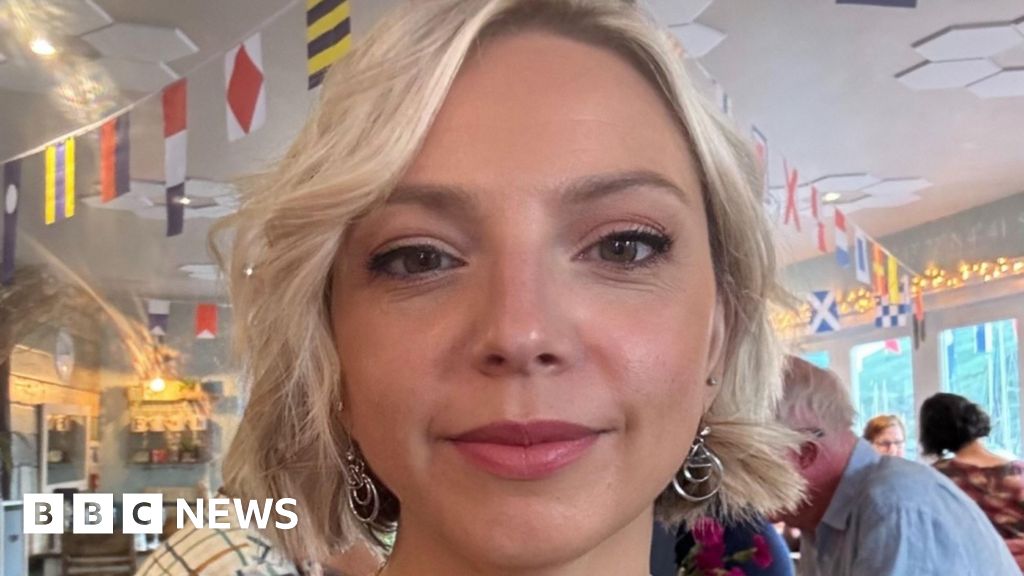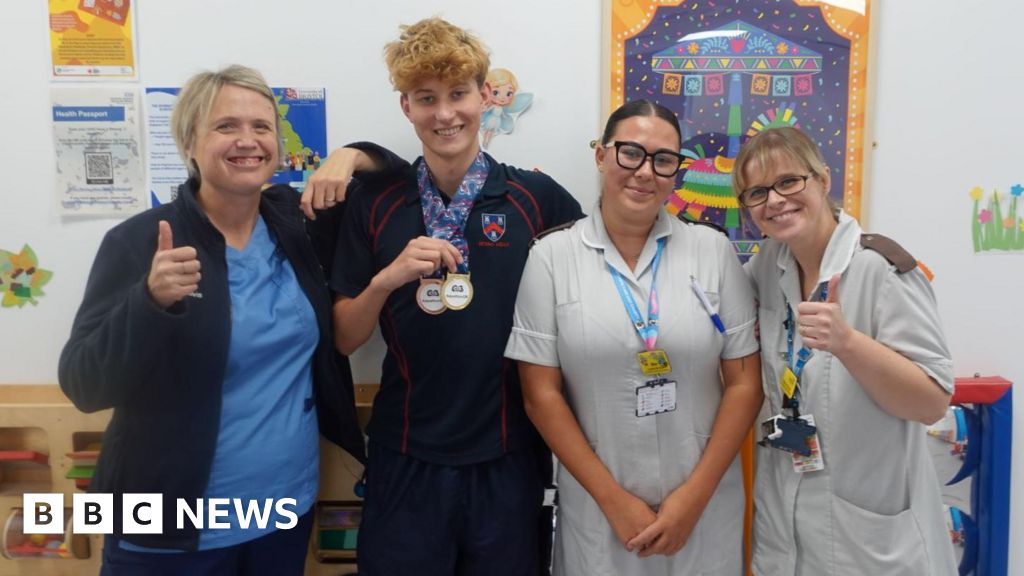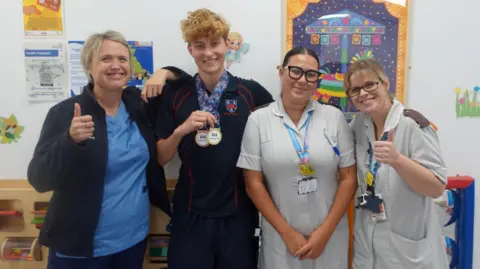Blog
-
ADC Improves Outcomes for Patients with Advanced Triple-Negative Breast Cancer Who are Ineligible for Immune Checkpoint Inhibitors
Patients with an aggressive form of breast cancer who are not candidates for immune checkpoint inhibitor therapy showed significantly improved progression-free survival when treated with the antibody drug conjugate sacituzumab govitecan compared to standard chemotherapy. These findings, which stem from the ASCENT-03 trial in triple-negative breast cancer co-led by investigators at Dana-Farber Cancer Institute, are presented today at the European Society for Medical Oncology (ESMO) Congress 2025 in Berlin, Germany. They are also published simultaneously in the New England Journal of Medicine.
Triple-negative breast cancer (TNBC) accounts for about 15% of all breast cancer cases and is often difficult to treat. The 5-year survival rate for patients with metastatic disease is about 15%. Moreover, around 60% of patients with metastatic TNBC have tumors that lack the molecular marker PD-L1. This absence indicates the tumors will not respond to immune checkpoint inhibitors. For most patients with previously untreated TNBC, chemotherapy is the primary treatment option.
“There are limited treatment options for patients with advanced triple-negative breast cancer — and that is especially true for those patients whose tumors are PD-L1-negative,” says Dr. Sara Tolaney, chief of the Division of Breast Oncology at Dana-Farber and senior author on the study. “Finding novel treatments that are effective in this patient population is a major priority for the field.”
Sacituzumab govitecan, an antibody drug conjugate (ADC), targets the protein Trop2, which is present at high levels on the surfaces of TNBC cells. The ADC binds to Trop2 and, through its molecular payload, delivers a potent chemotherapy drug directly to tumor sites. Sacituzumab govitecan is currently approved as a second-line treatment for patients with advanced TNBC. However, roughly half of patients with this disease do not go on to receive a second line of therapy, underscoring the magnitude of the unmet need.
ASCENT-03, a global, randomized, open-label phase 3 study, evaluates the use of sacituzumab govitecan versus standard chemotherapy as a first-line treatment in patients with locally advanced or unresectable TNBC who are not candidates for immune checkpoint inhibitors. A total of 558 patients across 229 clinical sites in 30 countries were enrolled and randomized to receive either sacituzumab govitecan or chemotherapy. In both treatment groups, about 99% of patients had PD-L1 negative tumors (277 out of 279 for sacituzumab govitecan; 278 out of 279 for chemotherapy).
After a median follow-up of 13.2 months, patients treated with sacituzumab govitecan were more likely to survive longer without disease progression, with a median progression-free survival of 9.7 months compared to 6.9 months for patients treated with chemotherapy. Those who responded showed a median duration of response of 12.2 months, compared to 7.2 months for those patients who responded to chemotherapy.
Data on overall survival are immature at this time. The safety profile of sacituzimab govitecan was consistent with its known profile and was manageable with current guidelines and supportive care.
“As oncologists and investigators, we’re always trying to move more effective therapies into earlier lines of treatment because we want patients to be able to have robust responses that potentially will translate into survival outcomes,” says Tolaney. “The data from ASCENT-03 are very compelling and support sacituzumab govitecan as a potential new standard of care for patients with previously untreated triple-negative breast cancer who are unable to receive immune checkpoint inhibitors.”
Dana-Farber investigators were involved in the first studies of sacituzumab govitecan in humans and participated in the pivotal clinical trials that led to its initial U.S. Food and Drug Administration approval for patients with pre-treated triple-negative breast cancer. Tolaney also helped lead the TROPiCS-02 study, which led to the ADC’s approval in pre-treated patients with HR-positive, HER2-negative metastatic breast cancer. Earlier this year, Dr. Tolaney presented results of the phase 3 ASCENT-04/KEYNOTE-D19 trial, which showed the combination of sacituzumab govitecan plus pembrolizumab resulted in durable responses with improved progression free survival compared to current standard treatment in patients with metastatic triple negative breast cancer that tests positive for the immune checkpoint PD-L1.
Funding: The ASCENT-03 trial was funded by Gilead Sciences, Inc.
Continue Reading
-

Drug groups unveil advances in treating most difficult breast cancers
Stay informed with free updates
Simply sign up to the Pharmaceuticals sector myFT Digest — delivered directly to your inbox.
AstraZeneca, Daiichi Sankyo and Gilead have made big advances in treating the hardest-to-tackle type of breast cancer, boosting prospects for tens of thousands of patients a year.
The drugmakers are unveiling trial results for existing blockbuster drugs in “triple negative” breast cancer — so-called because it is not one of the three main types. These include the first ever study showing a medicine can extend the life of patients who cannot be treated with immunotherapy drugs, the majority of triple negative cases.
Patients with triple negative breast cancer make up about 10 per cent to 20 per cent of people diagnosed. Breast cancer is the most common type of the disease in the UK, and the second most common after skin cancer in the US.
AstraZeneca and Japanese pharma company Daiichi’s drug Datroway improved overall survival for patients by 23 per cent, and increased the time they lived without the cancer getting worse by 43 per cent, compared with those treated with chemotherapy.
David Frederickson, executive vice-president for oncology at AstraZeneca, said the results showed an “outstanding opportunity” to expand treatment to more patients. The company has had 10 positive late-stage trial results in oncology this year, five of which have been in breast cancer.
“It’s been an exceptional year,” he said. “The breast cancer studies alone have the opportunity to reach nearly half a million patients.”
Frederickson added AstraZeneca’s oncology sales rose 16 per cent year-on-year in the first half and he hopes they will contribute half of the company’s goal of $80bn of sales by 2030.
AstraZeneca and Daiichi also announced positive trial results for their Enhertu breast cancer drug in earlier-stage patients. The treatment is approved for later-stage patients but it is not available on the NHS in England, even though it is in many other countries including Scotland.
One of two Enhertu studies found a three-year disease-free survival rate of 92 per cent, compared with 84 per cent with the most commonly used drugs.
Fredrickson said there needs to be a “modernisation” of NHS methodologies, including valuing the end of life more, to ensure patients can get access.
The results were presented at the European Society for Medical Oncology this weekend, where US drugmaker Gilead also reported positive results for its cancer drug Trodelvy in patients with triple negative breast cancer.
Trodelvy, which is already approved for breast cancer, reduced the risk of cancer progression or death by 38 per cent versus other forms of chemotherapy. Survival rates were extended with the drug to 9.7 months versus 6.9 months for chemotherapy, the company said.
Trodelvy generated $657mn for Gilead in the first six months of 2025, up 5 per cent from the same period last year. Oncology accounts for about 12 per cent of the company’s sales.
The latest data for Trodelvy marks a bounceback for the drug. A year ago, Gilead withdrew it for certain urinary tract cancers after it failed a drug trial.
Eli Lilly also reported encouraging data. Its Verzenio drug prolonged survival for certain high-risk early breast cancers by 15.8 per cent versus conventional treatments. It is the first therapy in more than two decades to demonstrate a significant overall survival benefit in certain, high-risk early breast cancers.
Continue Reading
-

Manx breast cancer survivor urges others ‘not to be scared’
Rebecca Brahde and
Ashlea TraceyIsle of Man
 CHIARA MAZZONE
CHIARA MAZZONEChiara Mazzone was diagnosed with breast cancer in summer 2023 A breast cancer survivor has urged others “not to be scared to get checked out”.
Chiara Mazzone had been attending annual…
Continue Reading
-

Ex-patient returns to Bristol hospital after swimming success
Chloe HarcombeWest of England
 University Hospitals Bristol and Weston NHS Foundation Trust
University Hospitals Bristol and Weston NHS Foundation TrustAshby returned to Bristol Royal Hospital for Children to celebrate his swimming success A teenager who was born with a life-threatening birth defect has…
Continue Reading
-
Lesser-known symptoms to detect kidney disease and four ways to prevent it, nephrologist explains – The Economic Times
- Lesser-known symptoms to detect kidney disease and four ways to prevent it, nephrologist explains The Economic Times
- What you need to know about the stages of chronic kidney disease, according to Mayo Clinic experts Mayo Clinic Press
- The shock…
Continue Reading
-

Toreros Piece Together Solid Showing at MPSF Open Water
LONG BEACH – Competing in the greater Los Angeles area for the second time in three weeks, the San Diego…
Continue Reading
-

Can artificial sweeteners affect memory?
Can artificial sweeteners actually be harmful to health? And can consuming them on the regular affect our memory and thinking skills? Although a new link found between sugar alternatives and brain aging requires more study, it may warrant some…
Continue Reading
-

Assessing Valuation After Strong 21% Monthly Share Price Rally
Samsung Electronics (KOSE:A005930) shares have been on a strong run, delivering a 21% gain over the past month with year-to-date returns approaching 83%. Investors are watching closely for hints of what might fuel its next move.
See our latest analysis for Samsung Electronics.
After surging nearly 22% in the last month, Samsung Electronics is riding a wave of renewed optimism, with its share price building strong momentum this year. Notably, the 12-month total shareholder return sits at 69%, outperforming many global peers and reinforcing a sense that market confidence in Samsung’s strategy and growth prospects is picking up.
If Samsung’s run has you thinking about what else could be on the rise, now is the perfect time to discover See the full list for free.
With shares already up sharply and optimism running high, the big question is whether Samsung is still trading at an attractive value or if the market has already priced in its next chapter of growth. Could this be a real buying opportunity?
Samsung Electronics’ most popular narrative suggests its shares still trade below a fair value estimate, compared with the most recent close. This sets up a compelling contrast between strong recent returns and the valuation outlook that follows.
Leadership in advanced semiconductor technologies and high-performance memory is driving customer wins, higher margins, and expanding Samsung’s presence in new and existing markets. Diversification into premium products, AI-powered devices, and high-margin sectors is supporting resilient profitability and reducing revenue cyclicality.
Read the complete narrative.
Want to know what bold forecasts are hiding behind this bullish price tag? The narrative hints at strong growth assumptions, shifting margins, and future profits more typical for market leaders. Uncover which aggressive projections are setting the bar for Samsung’s ambitious fair value. Dive into the full narrative to see what could be driving the optimism.
Result: Fair Value of ₩105,207 (UNDERVALUED)
Have a read of the narrative in full and understand what’s behind the forecasts.
However, persistent geopolitical tensions or tougher competition in semiconductors could disrupt Samsung’s stride. This could make the bullish outlook more challenging to achieve.
Find out about the key risks to this Samsung Electronics narrative.
While one method suggests Samsung is undervalued, its current price-to-earnings ratio stands at 22.8 times, higher than the peer average of 19.7 times but just below the broader Asian tech industry’s 23.4 times. The fair ratio estimate sits at 31.6 times, hinting there is room to run if the market agrees with optimistic growth assumptions. Are investors willing to pay up, or is caution about competition and future growth starting to creep in?
Continue Reading
-

Microsoft’s new icons are proving surprisingly popular with Apple fans
Microsoft officially launched its new Office icons earlier this month to mixed reception, but the divisive designs have impressed one unexpected collective. Thanks to the brand’s swift adoption of the sleek Liquid Glass UI, Apple fans have…
Continue Reading
